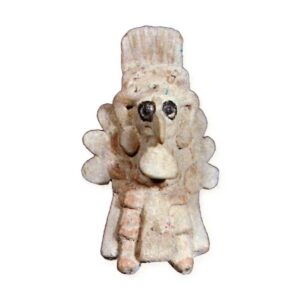
Maya pottery belongs to the most developed civilization in the New World, located in the southern part of the Yucatan Peninsula in Central America. During the Old Imperial Period (Classical Period) from the 4th to 10th centuries, spherical storage vessels with short necks were widely used. The surfaces were covered with slip and painted in black, red, orange, and other colors. The black earthenware is decorated with inscriptions, while the red earthenware has overhangs and folded edges.
Religious vessels from the Tsakol period (317-633) have red or black designs on cream or orange slip. The technique of nuki was also used. Flat-bottomed round pots are typical, with shallow, outwardly turned rims and sometimes with brimmed bottoms. Ancient American footed pots generally had three legs, but the Maya have four legs. The patterns are often geometric or highly formalized. There are black banded sections and wavy patterns, and some have motifs of jaguar snakes, fish, etc. By the Tepeu period (633-73), they are complex, corresponding to the advanced development of the Maya civilization. Tall cylindrical vases and bulging bulbous vessels are characteristic, and three-footed vessels are also common. The decoration includes thin reliefs and bands of sacred script adorning the sides of the bowls, but the shapes are almost entirely disfigured. There are also patterns expressive of religious life, and monsters, animals, and geometric patterns are common (see Bushnell, “Ancient and Ancient Vessels”). (Bushnell, AncientAmericanPottery)



